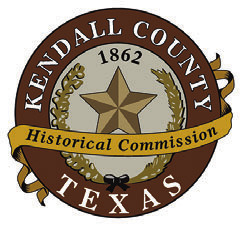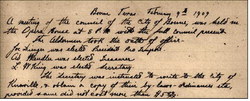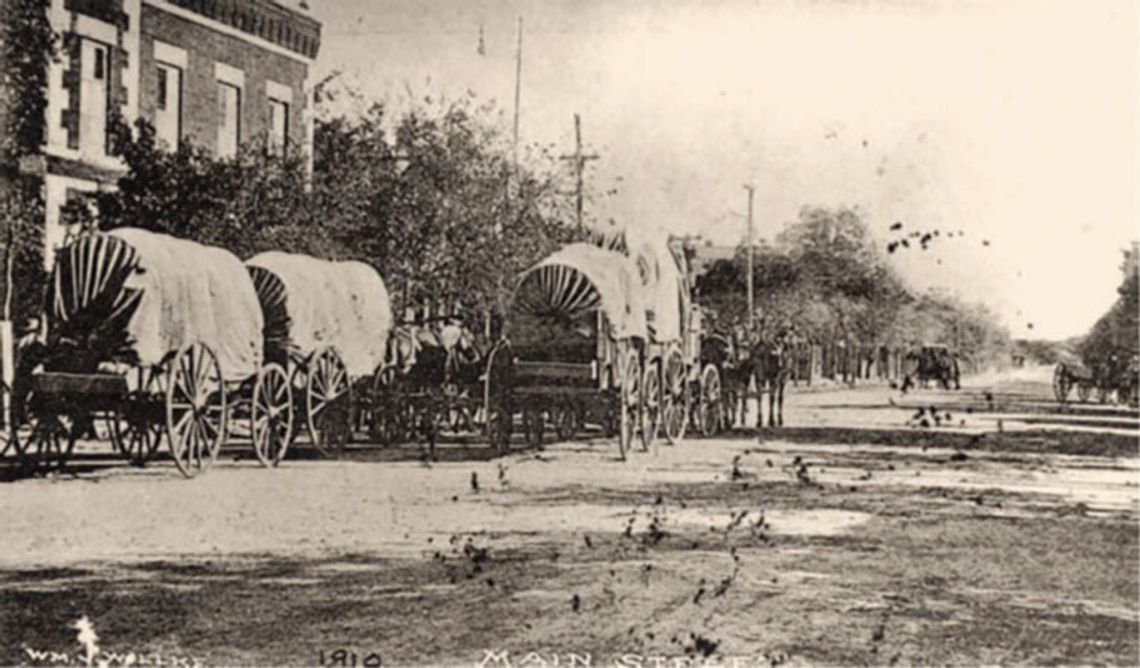While Boerne was first plotted in 1852, it didn’t have a city government until 57 years later.
The delay and also the desire to form a municipality might be attributed to the community’s population ... not enough in the beginning and then strong growth, with the number of residents nearly doubling, with 85% growth, in the prior decade,1890-1900.
As it turns out, two years before Boerne’s vote for formal incorporation in 1909, Boerne residents had already voted in 1907 for a free school district.
Without a city organization, the Kendall County Commissioner’s Court helped with the Jan. 26, 1907 “election” as recorded in their notes, “that said town should form incorporation for free school purposes.”
Prior to the 1907 vote, the county surveyor, Frank Nowlin, had drawn up the defining lines of the new school district’s jurisdiction. The proposed school district boundaries were stretched, and it encompassed 11,363 acres — nearly 20 times bigger than the land in the original 1852 578-acre Boerne plot.
Still one more critical decision was looming on the horizon: 57 years since its founding, Boerne still lacked a city government.
Although Boerne’s community leaders were pushing for the establishment of a city municipality, it was no slam dunk. Nowlin was again involved, tasked with defining Boerne’s proposed city limits, which he completed on Oct. 24, 1908.
This set the stage for a community vote on Jan. 18, 1909, on whether to incorporate. Votes were nearly split; Commissioners Court minutes of Jan. 18, 1909, yielded, “52 votes for incorporation and 50 votes for No incorporation.”
After the vote there was a flurry of activity. The election of the new Boerne city marshal, aldermen and mayor was held on Feb. 2. William Willke was elected mayor; a week later, on Feb. 9, the new Boerne City Council met in the Opera House (on the corner of Boerne’s Main and San Antonio streets, where Black Rifle Coffee is today).
Joe Vogt was elected “President pro tempore.” Adolph Wendler was elected secretary, “instructed to write to the city of Kerrville and obtain a copy of their bylaws & ordinances.”
While obtaining Kerrville’s city ordinances would be priceless, the newly elected and fiscally conservative City Council did manage to put a price of $5 as their maximum funding.
By March 11, 1909, the new Boerne City Council had drafted 120 articles for Boerne, providing a foundation of regulations that included rules against riding either horses or bicycles on the sidewalks, throwing stones, cursing and swearing, driving and herding stock down Main Street and any house of prostitution.
The new government was off and running ... metaphorically speaking, as Article 115B set the speed limit for any vehicle inside the city limits at 8 miles per hour. The new ordinances were published in the Boerne Star.

Street view of Boerne’s Main Street in 1910.








Comment
Comments